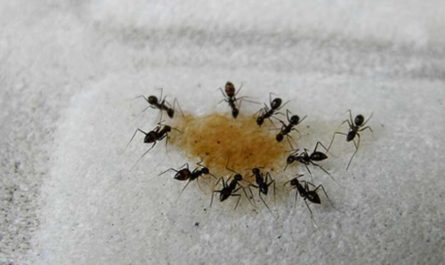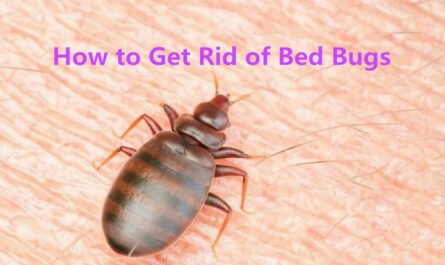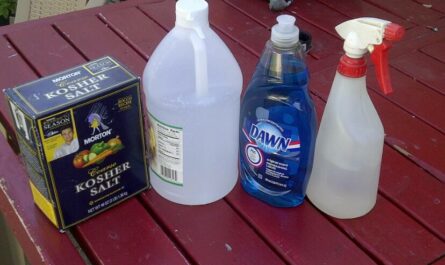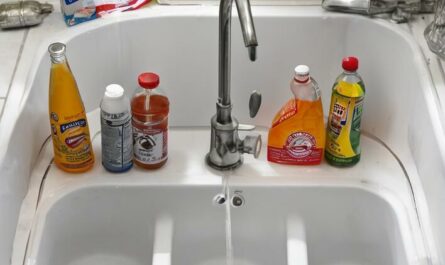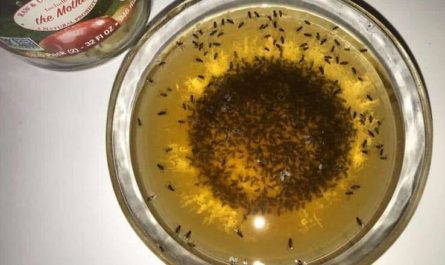Stink bugs can be a persistent problem when they invade our homes. These shield-shaped insects emit a foul odor when disturbed. While chemical pesticides are commonly used to eliminate them, there are several natural remedies you can try. In this article, we will explore 12 effective home remedies to get rid of stink bugs naturally and prevent infestations. By using these remedies, you can tackle the stink bug problem without exposing yourself to harmful chemicals.
What are Stink Bugs?
Stink bugs, known scientifically as Pentatomidae, are insects that emit a foul, cilantro-like odor when disturbed or crushed. There are over 200 species of stink bugs, but two common invasive ones found in the United States include:
- Brown Marmorated Stink Bug: Native to East Asia, these stink bugs have distinctive white bands on their antennae and darkened, marbled abdominal markings. They were accidentally introduced to Pennsylvania in the late 1990s and have spread to over 42 states.
- Kudzu Bug: Also known as the bean plataspid, these stink bugs originated in India and China and made their way to Georgia in 2009. They are major pests of kudzu, soybeans, beans, and other legumes. Their coloring ranges from olive green to brown.
Stink bugs have piercing, needle-like mouthparts that allow them to puncture plant tissues and suck out the juices inside. This sap-sucking damage severely stunts plant growth and renders fruits, vegetables, and pods misshapen or more susceptible to disease. Stink bugs feed on over 300 different host plants, including many fruits, vegetables, row crops, ornamentals, weeds, and trees.
Why are Stink Bugs a Nuisance?
Stink bugs don’t just wreak havoc in gardens, they can also become a major headache when they infiltrate your home. In cooler months when food grows scarce, stink bugs seek shelter in secluded overwintering sites, including houses, barns, and other structures.
Large aggregations of hundreds or thousands of stink bugs may accumulate in wall voids, attics, or crawl spaces. Throughout the winter they remain mostly dormant unless disturbed, at which point they may emerge inside to crawl on walls, ceilings, and flooring. Many homeowners report hearing the crunch underfoot as they unknowingly step on a stink bug.
Even worse, threatened stink bugs release their foul defensive odor. The stench has been described as smelling like dirty gym socks, rotten garbage, diesel exhaust, or skunk spray. The odor can linger for hours, permeating the air. Simply vacuuming or sweeping up dead stink bugs may trigger the release of this noxious smell inside your home.
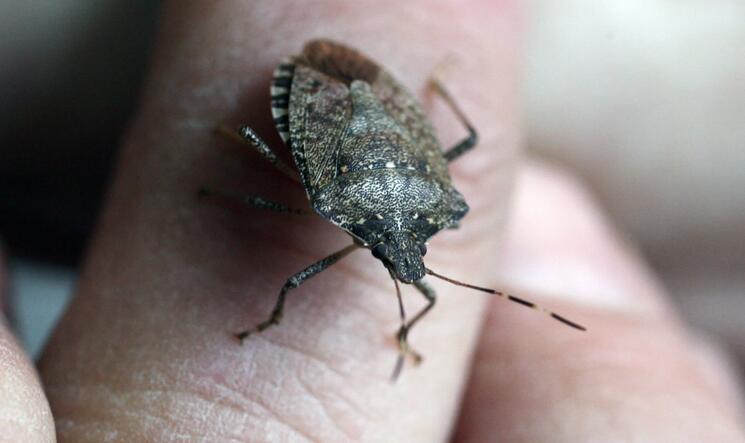
Signs of a Stink Bug Infestation
Be on the lookout for these common signs indicating the presence of stink bugs on your property:
- Damaged Produce: Carefully inspect fruits and vegetables and look for abnormal pale spots or distorted pods. Peel back leaves to find clusters of eggs and newly hatched nymphs. Stunted or wilted plants may also indicate stink bug feeding.
- Stink Bug Odor: If you catch a whiff of an offensive, skunky smell, especially if it worsens when you vacuum, it may signal an indoor infestation. The stench is most noticeable when you crush or disturb the bugs.
- Visual Sightings: Scan plants for all life stages of stink bugs, especially on the undersides of leaves and in branch forks. Look along foundations, under eaves, and around windows and doors for live stink bugs and deceased ones piling up.
- Dead Stink Bugs: Large numbers of dead stink bugs around doors, windows, and other openings strongly indicate they are gaining entrance there. Crunchy stink bug carcasses may also be littered around infested plants.
- Eggs: Turn over leaves to reveal clusters of light green, black-banded barrel-shaped stink bug eggs, often laid in rows along the midrib. Each female can lay 20-30 eggs at a time and over 400 in a lifetime.
12 Home Remedies to Get Rid of Stink Bugs Naturally
For mild stink bug infestations limited to a few plants or isolated areas indoors, natural DIY remedies can effectively eliminate the pests without using harsh chemical pesticides.
1. The Soapy Water Trap
One of the simplest and most effective methods to eliminate stink bugs is by creating a soapy water trap. Fill a shallow dish with water and add a few drops of dish soap.
Place the dish near windows or other areas where stink bugs are frequently seen. The soap breaks the surface tension of the water, causing the stink bugs to sink and drown when they come into contact with the solution. Check the trap regularly and empty it as needed.
2. DIY Stink Bug Repellent Sprays
You can create your own stink bug repellent sprays using natural ingredients. One popular recipe involves mixing equal parts water and white vinegar in a spray bottle. Add a few drops of essential oils such as peppermint, eucalyptus, or lavender to enhance the repellent properties.
Shake the bottle well and spray the solution around windows, doors, and other entry points. This spray is not only effective against stink bugs but also safe for use around children and pets.
3. Vacuuming Stink Bugs
Using a vacuum cleaner with a long hose attachment is an effective way to physically remove stink bugs from your home. When vacuuming stink bugs, it’s important to avoid crushing them, as this can release their foul odor.
Empty the vacuum bag or canister outside after each use to prevent the odor from lingering in your home. If you’re concerned about stink bugs escaping from the vacuum, you can place a mesh screen over the vacuum attachment to capture the bugs.
4. Lighting Traps at Night
Stink bugs are attracted to light, especially during the night. You can create a simple lighting trap by placing a desk lamp near a container filled with soapy water.
The light will attract the stink bugs, and when they land on the water’s surface, the soap will cause them to drown. For better effectiveness, you can add a few drops of sweet-scented fruit juice or a vinegar solution to the water to make it more enticing to the stink bugs.
5. Garlic Spray Solution
Garlic has a strong scent that repels stink bugs. To create a garlic spray, take several garlic cloves and crush them. Mix the crushed garlic with water in a spray bottle and let the mixture sit overnight.
Strain the liquid and spray it around windows, doors, and other areas where stink bugs are present. The pungent odor of garlic will act as a deterrent, keeping the stink bugs away from your home.
6. Mint as a Natural Deterrent
Stink bugs dislike the strong scent of mint. Planting mint around your home’s perimeter can help deter stink bugs from entering. You can also place mint leaves in small sachets and strategically position them near windows and doors.
Another option is to make a mint spray by steeping fresh mint leaves in hot water, straining the liquid, and transferring it to a spray bottle. Spray this solution around entry points to repel stink bugs.
7. Neem Oil – The Natural Pesticide
Derived from the neem tree, neem oil is a natural pesticide that is effective against a wide range of pests, including stink bugs. Mix neem oil with water according to the instructions on the product label and spray it on plants, windowsills, and other areas where stink bugs are active. Neem oil disrupts the feeding and reproductive patterns of stink bugs, helping to control their population.
8. Diatomaceous Earth for Stink Bug Control
Diatomaceous earth is a natural and non-toxic powder made from the fossilized remains of diatoms, a type of algae. It is safe for humans and pets but deadly to stink bugs.
Sprinkle diatomaceous earth around windows, doors, and other entry points to create a barrier that stink bugs cannot cross. When stink bugs come into contact with the powder, it absorbs their waxy protective coating, causing them to dehydrate and die. Be sure to use food-grade diatomaceous earth, as the one used for pool filtration is not safe for this purpose.
9. Essential Oils That Repel Stink Bugs
In addition to peppermint and eucalyptus oils, several other essential oils can repel stink bugs. These include tea tree oil, lemongrass oil, and citronella oil. You can create your own stink bug repellent spray by combining a few drops of these oils with water in a spray bottle.
Shake the bottle well before each use and spray the solution around windows, doors, and other areas where stink bugs are present. Reapply the spray as needed to maintain its effectiveness.
10. Hot Pepper Spray
Stink bugs are repelled by the strong and spicy scent of hot peppers. To make a hot pepper spray, blend fresh hot peppers with water in a blender until you have a smooth mixture. Strain the mixture and transfer the liquid into a spray bottle.
Spray this solution around windows, doors, and other areas where stink bugs are present. The capsaicin in the hot peppers acts as a natural repellent, discouraging stink bugs from entering your home.
11. Sealing Cracks with Caulk
To prevent stink bugs from entering your home, it’s important to seal any cracks or gaps in your windows, doors, and walls. Use caulk to seal these openings, ensuring a tight seal that stink bugs cannot penetrate.
Inspect your home thoroughly for potential entry points and apply caulk as necessary. This will help to reduce the number of stink bugs that can find their way inside.
12. Using Rubbing Alcohol
Rubbing alcohol is an effective way to kill stink bugs on contact. Fill a spray bottle with rubbing alcohol and spray it directly on the stink bugs as you encounter them.
The alcohol will dehydrate and kill the bugs, making it easier to dispose of them. Be sure to wear gloves and avoid contact with your eyes or skin when handling rubbing alcohol.
Best Practices for Applying Home Remedies
1. When to Apply Stink Bug Remedies
To maximize the effectiveness of your stink bug remedies, it’s best to apply them during the early morning or late evening when stink bugs are most active. Applying the remedies during these times increases the likelihood of direct contact with the pests.
2. Safety Considerations for Natural Remedies
While natural remedies are generally safe, it’s essential to follow safety precautions. When using essential oils or other strong substances, ensure proper ventilation. Additionally, keep these remedies away from children and pets to prevent accidental ingestion.
3. How to Clean Up After a Stink Bug Infestation
After successfully eliminating a stink bug infestation, it’s important to clean up thoroughly. Vacuum any dead bugs and dispose of them in sealed bags. Wipe down affected areas with a mixture of water and vinegar to remove any residue or odor left behind.
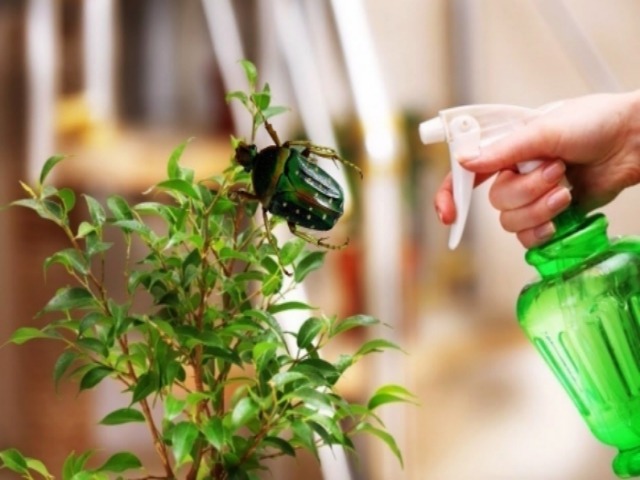
How to Prevent Stink Bug Infestations?
Preventing stink bug infestations is key to avoiding the annoyance and potential damage that these pests can cause. Here are some effective methods to keep stink bugs from invading your home:
1. Seal Entry Points: Inspect your home for any gaps, cracks, or openings that stink bugs can use to enter. Pay attention to areas around windows, doors, utility pipes, and cables. Use caulk or weatherstripping to seal these entry points and create a barrier.
2. Install Screens: Ensure that all windows, doors, and vents have tightly fitted screens. This will prevent stink bugs from flying or crawling into your home while still allowing fresh air to circulate.
3. Maintain a Clean Landscape: Stink bugs are attracted to vegetation, so it’s important to keep your yard well-maintained. Regularly trim shrubs and trees that are close to your house, as stink bugs can use them as bridges to access your home.
4. Remove Food Sources: Stink bugs are attracted to ripe fruits, vegetables, and certain plants. Remove fallen fruits from the ground and harvest vegetables promptly. Dispose of any overripe or damaged produce properly. Consider using mesh netting to protect your garden from stink bug infestations.
5. Proper Storage: When storing items in your garage or attic, make sure they are sealed in airtight containers. Stink bugs can seek refuge in cluttered areas, so keeping your storage spaces organized and clean will reduce their hiding spots.
6. Outdoor Lighting: Stink bugs are attracted to light, so consider using yellow or sodium vapor lights for outdoor lighting. These types of lights are less attractive to stink bugs compared to white lights.
7. Vacuum Regularly: Regular vacuuming can help remove stink bugs that may have entered your home. Pay close attention to windowsills, door frames, and other areas where stink bugs are commonly found.
8. Natural Repellents: Stink bugs are deterred by certain scents. Planting mint, lavender, or marigold around the perimeter of your home can help repel stink bugs. You can also use essential oils such as peppermint or eucalyptus near entry points to discourage them from entering.
When to Call a Professional Exterminator
For severe or challenging stink bug situations, seeking professional pest control services may be your best bet:
- If stink bug numbers are overwhelming despite your diligent DIY efforts
- If the infestation is located in difficult-to-access areas like wall voids, attics, or crawlspaces
- If you seek complete removal without the hassle or risk of doing treatments yourself
- If you need help designing a customized prevention plan for your property
- If you want to understand the root causes driving the infestation
- If you lack the physical mobility or time required for intensive control measures
- If neighbors need a coordinated community-wide treatment effort for optimal impact
Licensed exterminators have specialized tools, equipment, and insecticides available for remediating large-scale infestations. They are extremely knowledgeable about stink bug behavior and biology, allowing them to track down elusive breeding and entry sites

